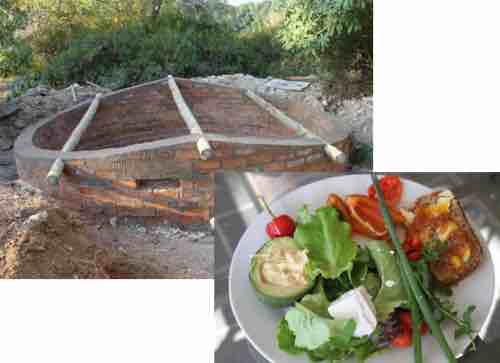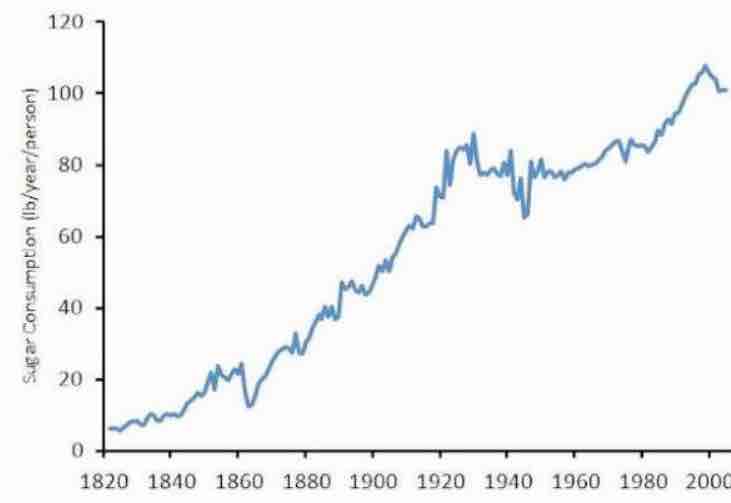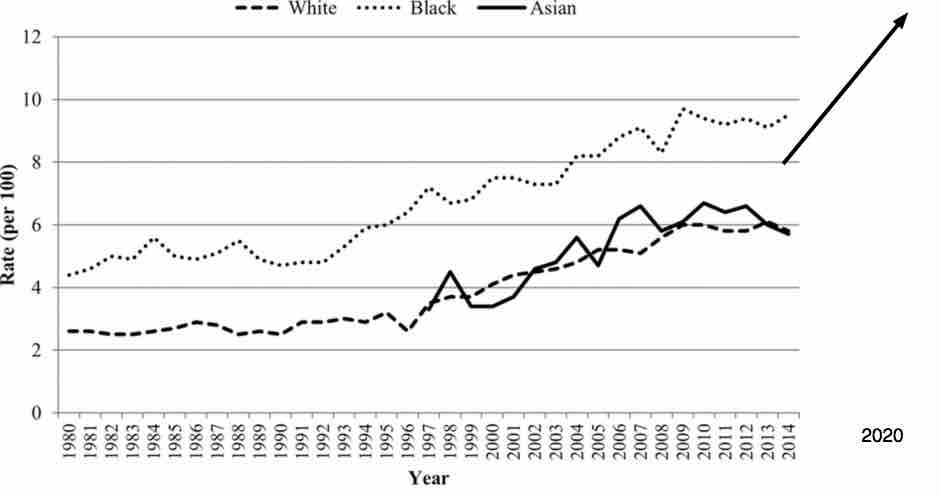| Back to Back Issues Page |
 |
|
Wear your clothes out January 13, 2021 |
DearWear your clothes outWear your clothes out because old garments are a huge contributor to plastic waste. Greetings from Bernard Preston to this fourteenth newsletter about creating a Cyan Zone at your home. That means caring not only for your own family, as they do in Blue Zones but also for the planet, a green issue. This week we return to a green zone issue; doing our small part to make sure our grandchildren will inherit from us an environment as good as our forebears left us; and perhaps even better. And some thoughts on why type-2 diabetics are so vulnerable to the cytokine storm that kills many of those infected by the bug.
Researchers have found that if those plastic microparticles find their way into the clots forming in our arteries, we are 4.5 times more likely to die from a massive cardiovascular event. Research shows that 90% of bottled water contains plastic particles. We consume about 5 grams every week from the liquids we drink; that's roughly the weight of a credit card. Every week and some of it comes from old clothes that we have tossed in the garbage. So too your salt cellar is a rich source of plastic microparticles; it is garnered from seawater. How are we going to explain to our grandchildren that we actually did know that dead whales were being washed up on beaches of every continent, their bowels stuffed with plastic bags; yet continued to dump synthetics frivolously in the trash? Alas I fear the great majority are leaving the planet to die unmourned, and within a hundred years the green fields where rivers used to run, the pristine seas where whales once played may be unremembered. Could Mother Earth in the not too distant future be a wasteland, as barren as the surface of the moon? Only now that it is impacting directly on our own health are we beginning to sit up and take an interest. Discarded old clothing made from synthetic materials are a part of the problem. We toss them in the trash, they go to a landfill and eventually the tiny particles of plastic find their way into the underground water; and one way or another into our bellies too, where they are deposited deep in our own tissues. Researchers are telling us that they have a profoundly negative effect on our immune systems. Like we are blind to the very toxic herbicides used to kill the potato haulm and many grains before harvesting, we can't see that plastic in our water and salt, so we do not worry; but they are both there poisoning us and the planet. This is a true Cyan Zone issue; it is affecting both our well-being and that of Mother Earth profoundly. It is no coincidence that auto-immmune diseases have soared in the last fifty years; and we seem helpless in the face of the attack by the virus.
Let us respect both the previous owner who donated it to the secondhand store at the SPCA; and the man who is not too proud to do his shopping there. On a personal note, I do almost all my own shopping for clothes at this outlet. It saves me a huge amount of time and money; the only problem is that many of my garments now have the buttons on the wrong side! Does your wardrobe really become a ruin when you hang up a worn jacket in it? It's not quite the same as a home with a broken roof tile. Secondhand RoseOn a lighter note, if you have never heard Barbara Streisand singing Second Hand Rose from Funny Girl, do yourself a favour and enjoy it on YouTube.She laments her secondhand clothes; it's a gem.
Second Hand Rose
The crumpled lookMuch of this is about ego; having to look picture-perfect for every occasion. Letting go of that, happy to appear in public with a crumpled look is probably not easy for most of us.The cow with the crumpled horn wasn't happy about it either. I've said it before, cyan zone people are religious. There are many reasons why I rejoice in being a Christian, not least because God has made me comfortable in my own skin. He has given me that reason for being, "ikigai" as the Blue Zone folk from Okinawa call it, so that I no longer have to think about making the right impression. I know who I am, and why I'm here regardless of how my clothes look. It no longer bothers me if others call me Secondhand Bernie, or Farmer Jones, wearing my old clothes out with a decidedly worn look. High and holy daysGreen Zone folk iron their clothes only for high and holy days. They no longer feel that need to look "professional" whenever in public.Take me as I am. If they are going to a wedding or have an interview for a new job then perhaps they will go to the trouble to straighten the tie; and make sure their hair is neatly combed and the shirt ironed. For the rest, they don't waste their time ironing their clothes; that gives them probably several hours a week to get on with more important things. Electicity consumption of an ironThe average iron draws about 1 kW; it's not a huge amount of money but for half an hour a day, it would amount to about R400 per year in South African currency.But multiply that by 10 million SA families and we are looking at 5,000 megawatt hours per day. That's one whole coal-fired power station. Just as bad, it means that the average housewife might spend 150 hours per year standing at the ironing board. If she instead spent 3 hours per week taking a walk, she would according to Harvard Medical School reduce her all-cause of death by a massive 32%. Just where are our priorities? Is living long and zestful lives free of pain not more important than looking picture-perfect in public?
"Researchers found that walking reduces the risk of cardiovascular events by 31% and cuts the chance of dying by 32pc. These benefits were equally robust in men and women. Protection was evident even at distances of just 5½ miles per week at a very casual pace." - Harvard Medical School New Year's resolutionsIt was Thomas Hardy, writing in Far from the Madding Crowd, who remarked that resolutions are not usually made until an evil is so far advanced as to make further avoidance impossible.We have not yet reached that point. Plastic waste in our oceans will get worse; and probably a lot more. It is estimated that its weight will be over that of all the sea life in just a few decades. But already I am cutting back on salt, not because I'm overdosing but because of the microparticles of plastic in it. I no longer buy bottled water; and there is now the question of eating fish. It was Benjamin Franklin who chided us to do what we ought and to perform without fail what we have resolved to do. Even if we performed it for the month of January only, it would help. Wear your clothes out before tossing them in the garbage.
"If you can keep your head when all about you are losing theirs, it's just possible you haven't grasped the situation." - Jean Kerr 20 year ruleOn an entirely different subject, a remarkable South African researcher discovered the 20 year diabetes rule. He was studying trends amongst rural people who moved to the cities, changing their diets completely.After they moved to the cities, he found they consumed 16 times more sugar; but interestingly significantly less calories. That is because rural folk eat more fat, yet have little problem with obesity. George Campbell's sugar ruleAfter two decades of consuming about 70 lbs of sugar per year, 21 teaspoons per day, there is a dramatic rise in the likelihood of becoming diabetic.That's just two cans of a sugar-sweetened cola.

It was the dramatic rise starting in 1980, as we changed to a high refined carbohydrate diet that interested Campbell. That was followed about twenty years later by the shocking rise in diabetes in South Africa to currently 12.8% of the population. 
The story is complicated by the fact that, moving from rural areas to the cities it was not only sugar consumption that rose dramatically. There was also a change from eating whole grain corn to highly refined maize-meal. Formerly farmers would grind their maize once a week for both themselves, their staff and the animals. It was whole grain containing the full germ and bran. After a few days, the fats would start to go rancid so it had to be done regularly. Zulus traditionally ate "stamp koring" that they ground themselves on a daily basis so that it was always fresh, the fats in the maize unoxidised. Both in the USA, after the new Dietary Guidelines were introduced in the 70's demanding less fat and more carbohydrate, and in South Africa where the move to cities swelled that the prevalence of type-2 diabetes soared. It was refined carbohydrate typified by sugar, cornmeal and cake flour that brought about these changes.
Adipose tissueAdipose tissue in the body actually behaves exactly like an organ. It has a blood and nerve supply and it gives off hormones and neurotransmitters; in particular highly-inflammatory cytokines.This is precisely why the obese, and those with raised blood glucose are particularly prone to the killer cytokine storm that pathogens evoke. The good news is that after just two weeks on a low carbohydrate diet, these inflammatory cytokines are reduced dramatically. So too is the fat deposited in the liver, pancreas and other organs. It's excessive refined carbs that are making us obese. On a low carbohydrate diet, in particular those that are refined, blood glucose levels improve; as does the response of our cells to insulin.
Enjoying whole carbs should certainly not plunge you into despair; corn on the cob has a low glycemic index, particularly if you add some fat such as a smear of butter. Avoid the hydrogenated oils in margarine. Nevertheless to lose weight, the obese have to reduce all carbs, the good and the bad to below 50 grams per day for a period. Below 20 grams the body goes into ketosis and the adipose falls off very rapidly. If you are diabetic this should only be done under the supervision of your doctor as levels of medication need to be drastically reduced and blood sugar closely monitored; otherwise you could go into a coma. CinnamonDiabetes is characterised by the receptors of our cells having poor sensitivity to the hormone insulin; they are unable to absorbe that excess blood glucose.Use cinnamon daily in your cooking; it has the proven ability to improve the insulin sensitivity of your tissues. Processed by spice companies, cinnamon is really quite expensive. However just look at the price of this raw bark; less than a dollar for 100 grams. Not only does it improve your health, but adds wonderful flavour to your food.
cinnamon-and-diabetes.html I am sure you have noticed from photographs in the press and those known to you who have died from the virus that it is targeting the obese and diabetics. Just two weeks on a strict low carb diet and especially sugar dramatically reduces the inflammatory cytokines; and makes you far less vulnerable to a fatal attack by this virus. Pulling the sweet tooth might just save your life. On a personal note, we eat almost no sugar now; every few months perhaps a bar of chocolate or a couple scoops of ice-cream. These are radical times; if we want to be sure we will weather a viral attack, drastic measures are needed. The virus is mutating and it is foolish in the extreme to assume that we can take the vaccination and be certain we will have all the protection we need. Cut the sugar, drastically reduce all refined carbs and you have a good chance of surviving this pandemic.
A huge criticismPersonally I am absolutely appalled that all the emphasis from the authorities about managing the pandemic has been about social distancing, masks and washing; and now having the vaccination.I have not read one word about the importance of what we eat in the face of this plague that has broken out.
To sum upWear out your old clothes and don't be concerned about a worn shirt or pair of trousers when you are in the privacy of your own home; how you look is far less important than how the planet fares.Be sure you will be a survivor of the plague; cut the sugar out of your diet. Yes you are right. I am deeply involved in a very testing, high-powered course on the physiology of obesity and diabetes; and how to protect our bodies and minds from the ravages of inflammation, pain and even premature death. It doesn't just happen to others. Good luck, you can do it.
"New Year's Resolution: To tolerate fools more gladly, provided this does not encourage them to take up more of my time." — JAMES AGATE
If this column continues to be foolish in your eyes, then it's time to stop wasting your time and unsubscribe. If it has touched a chord in your heart, then please forward it to a few friends but only if you feel it is of value; we all get more than enough spam. It will from now on be only a monthly newsletter; or less.
Next weekNext week we continue to look at the small things we can do to protect both ourselves and the planet from the ravages of disease and pollution.
Until next week, Doc Bernie
|
| Back to Back Issues Page |



